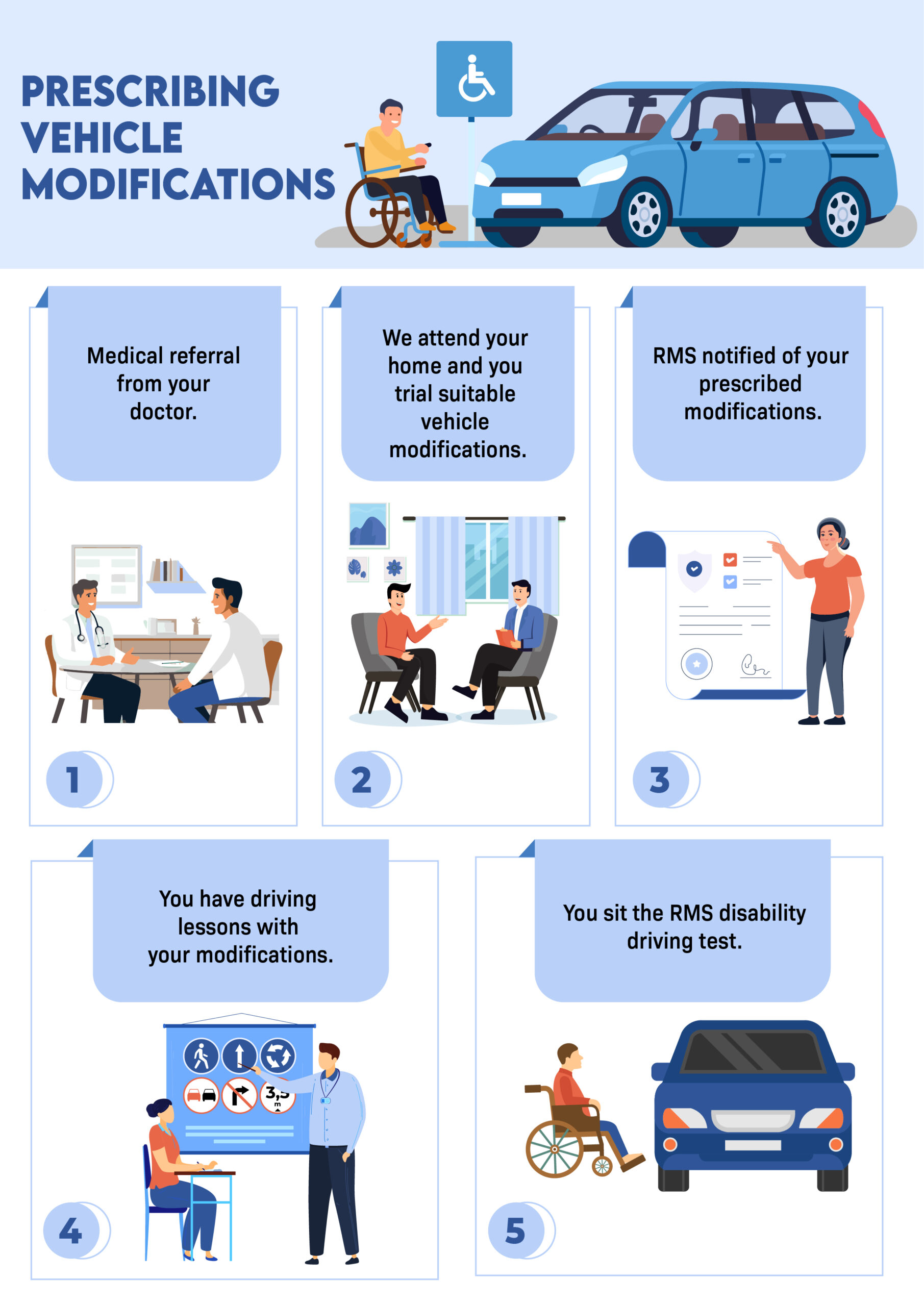In today’s technology-packed world, innovation in disability support devices and modifications have come a very long way. Nowadays, there are fewer limitations on what a disabled person can accomplish with devices that compensate for their disability or help to make tasks that little bit easier.
One arena where there has been a great deal of progress is in modified driving solutions that enable people with disabilities to independently operate motor vehicles. Needless to say, the ability to independently use a car is a hugely important milestone for any person living with a disability as it opens up an incredible array of opportunities for them, such as wider access to employment.
There are a wide variety of vehicle modification available to suit different people with different types of disabilities. Let’s take a look at some of them now.

Wheelchair Access Vehicle (WAV) modifications
One of the most common disability modifications made to vehicles are designed to allow ease of access for transporting passengers in wheelchairs. These modifications are made to make life easier for the person with a wheelchair as well as their families and/or caregivers.
Motorised wheelchair ramps can be installed onto vehicles that fold neatly inside once they’ve served their purpose. They aren’t just relegated to the rear of the vehicle, as modifications can be extended to allow those with wheelchairs to be positioned in the front passenger or driver’s position.
Automated wheelchair hoists also exist which allow a wheelchair to be easily lifted and stored on top of the vehicle and taken down just as easily. The benefit of a hoist is that it is a less intrusive modification than a ramp as it does not require seating to be cut away to make room for it.
This means that, with the right modification, there should be little to no obstacles in the way of a someone with a wheelchair getting unprohibited use out of a motor vehicle.
Hand acceleration/braking control
For amputees, people with paralysis or another disability that inhibits the use of foot pedals, hand controls are the go-to solution that allows them to independently operate a vehicle. There are several ways these kinds of devices can be set up to function to suit the comfort of the disabled driver, with options for pushing, patting and pulling controls.
Spinner knobs
Spinner knobs look and function similar to the types of knobs you may see on steering wheels for large semi-trailers or forklifts that allow for a tighter turning circle. For drivers with disabilities that make the traditional operation of a steering wheel difficult, these simple and subtle devices can make a huge difference.
Walking rails
Walking rails are another simple modification that makes day-to-day life a lot easier for divers with a disability. Installed along the top edge of the sides of the vehicle, the rails blend seamlessly into the rest of the vehicles design and give the extra support a driver with a disability may require when navigating around their vehicle.
Indicator/horn switches
Modifications can also be made to the position of indicator and horn controls to make them more accessible for drivers with a disability.
Pedal extensions
Pedals can be extended back or brought forwards to suit the comfort of the driver.
The above are just some of the most common modifications that are made to vehicles that allow drivers with disabilities to effortlessly enjoy the freedom driving brings.
If you think you or someone you care for can benefit from a disabled driving modification, get in touch with us so you can organise a driving assessment to see where they could be aided.




